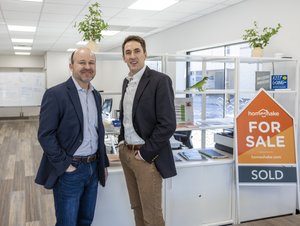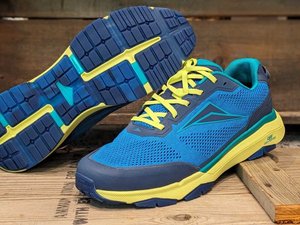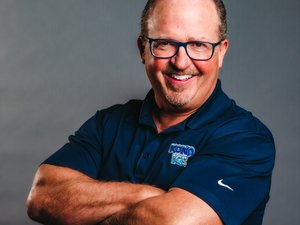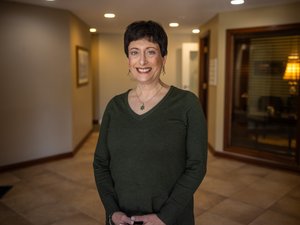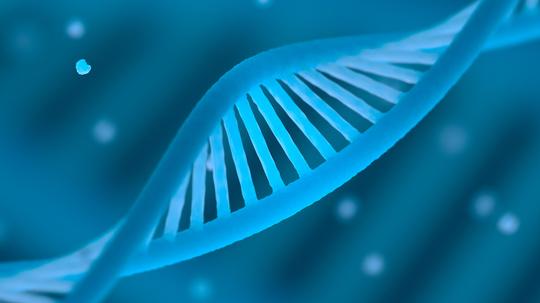
Now the fourth company to form out of Nationwide Children’s Hospital’s Center for Gene Therapy in the last five years, Myonexus Therapeutics aims to deliver the first-ever treatments for limb-girdle muscular dystrophies.
The clinical stage gene therapy company began in 2017 to accelerate the development of five gene therapies for LGMDs that were developed and licensed within the Center for Gene Therapy. Three of these treatments are in the clinical stage — the final stage before FDA approval — and two are in the preclinical stage. While Myonexus Therapeutics is based out of New Albany, Ohio, in the Columbus metropolitan area, the team of co-founders have studied and worked all around Ohio.
"We’re happy to try to bring these therapeutics to the market so that these patients around the world will have the opportunity to receive gene therapy."
Muscular dystrophy is a group of rare genetic diseases that causes muscle degeneration. The muscle weakness is caused by gene abnormalities that interfere with the production of proteins needed for healthy muscle. The different types of muscular dystrophies are caused by different gene mutations that cause the disease.
While LGMDs affect thousands of people in the U.S. and around the world, there are currently no available treatments for LGMD. Care for LGMD patients is focused on preventing complications caused by muscular dystrophy, such as muscle weakness, decreased mobility, contractures, scoliosis, heart defects and respiratory insufficiency.
However, the gene therapies being developed by Myonexus Therapeutics may offer a cure for LGMDs. The gene therapies work by injecting a healthy gene into the bloodstream of a patient with a form of LGMD. The healthy gene will replace the mutated gene, thus ending the LGMD. The gene therapies are a one-time treatment that can be delivered once a patient is diagnosed with a LGMD. If administered early enough, the gene therapies can stop the diseases from ever manifesting in patients. President and CEO of Myonexus Therapeutics, Michael Triplett, said the company hopes to have the first product available by 2023-2025.
“Since we’ve founded the company, every time we do something in [the] media I get inundated with people around the globe emailing, calling and asking is they can participate in clinical trials, sharing their stories and diagnosis,” Triplett said. “The eyes of the world are on Ohio in this regard, both with the great work at Nationwide Children’s and what we’re doing with Myonexus. For the first time, these people have potential hope. It’s inspirational and reinforces the mission of Myonexus.”
Triplett began Myonexus Therapeutics along with Bruce Halpryn, his business partner from a previous venture called N8 Medical. Both were highly impressed by the portfolio of LGMD gene therapies developed by the Center for Gene Therapy. “It is rare to find assets at leading academic research institutions that are in the clinical stage that have not been licensed already by a startup company or a major pharmaceutical company,” Triplett said. “The vast majority of candidates fail in a pre-clinical stage, so getting into the clinical stage means there is significant progress in the technology.”
Aside from the lower investment risk that clinical-stage assets offer, Triplett said he and Halpryn also saw a moral obligation to grow the gene therapies. “We’re happy to try to bring these therapeutics to the market so that these patients around the world will have the opportunity to receive gene therapy,” he said.
Tripplett’s background is largely in applied engineering and developing early-stage companies, and he uses all the knowledge and skills built throughout his career to grow Myonexus Therapeutics. His cofounders have also worked and studied across Ohio. Halpryn, who serves as secretary and COO, has over 30 years’ experience in leading the strategic design and execution of healthcare product development portfolios. Chief Scientific Officer Louise Rodino-Klapac also serves as the principal investigator in the Center for Gene Therapy.
“It’s fun to see us working collaboratively across the state of Ohio drawing upon those different backgrounds to do something with global impact,” Triplett said. “Myo is the root of muscle in Latin, and nexus is the intersection of a group a people who have different backgrounds all working toward a common goal. So Myonexus Therapeutics is muscle with that intersection of different perspectives and backgrounds.”
In addition to the Center for Gene Therapy’s exceptional portfolio and the diverse skillsets of the cofounders, Myonexus Therapeutics has also grown due to investment from groups such as Columbus investor groups and LGMD foundations from around the globe. It's Cincinnati connection? The Queen City-based CincyTech, which has a history of investing in pediatric innovations with the Cincinnati Children's Hospital, also invested in Myonexus Therapeutics.
It was a big step for the organization, as it almost always only invests in South Western Ohio companies, Myonexus afforded CincyTech with an opportunity to support an emerging therapy developed in-state that could have immediate and lasting impact on those suffering from a rare disease. CincyTech was in.
As for the future of the startup, Triplett said Myonexus Therapeutics will take its third program into clinical trials this year and continue to generate data that will show whether or not the gene therapies work
